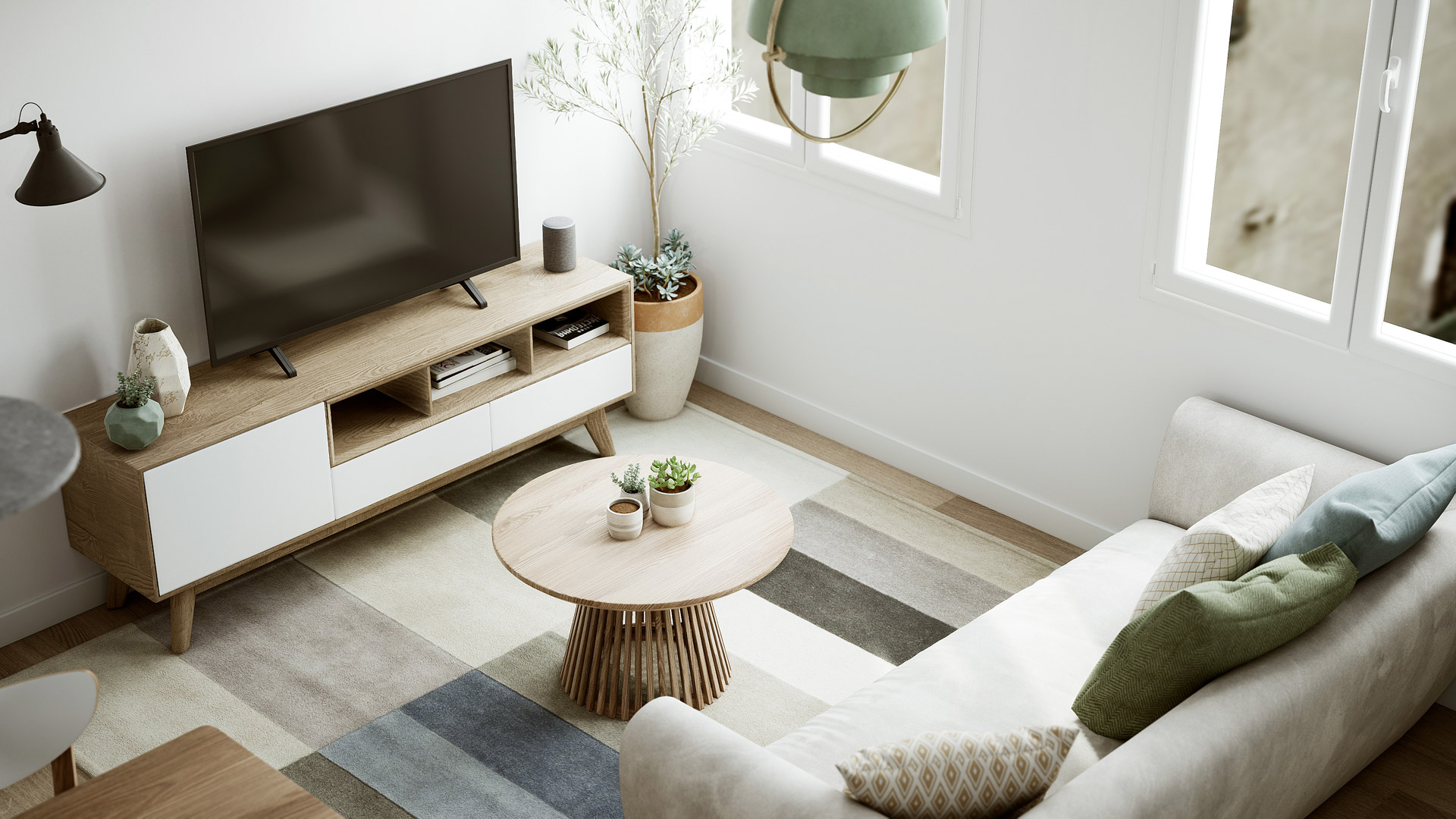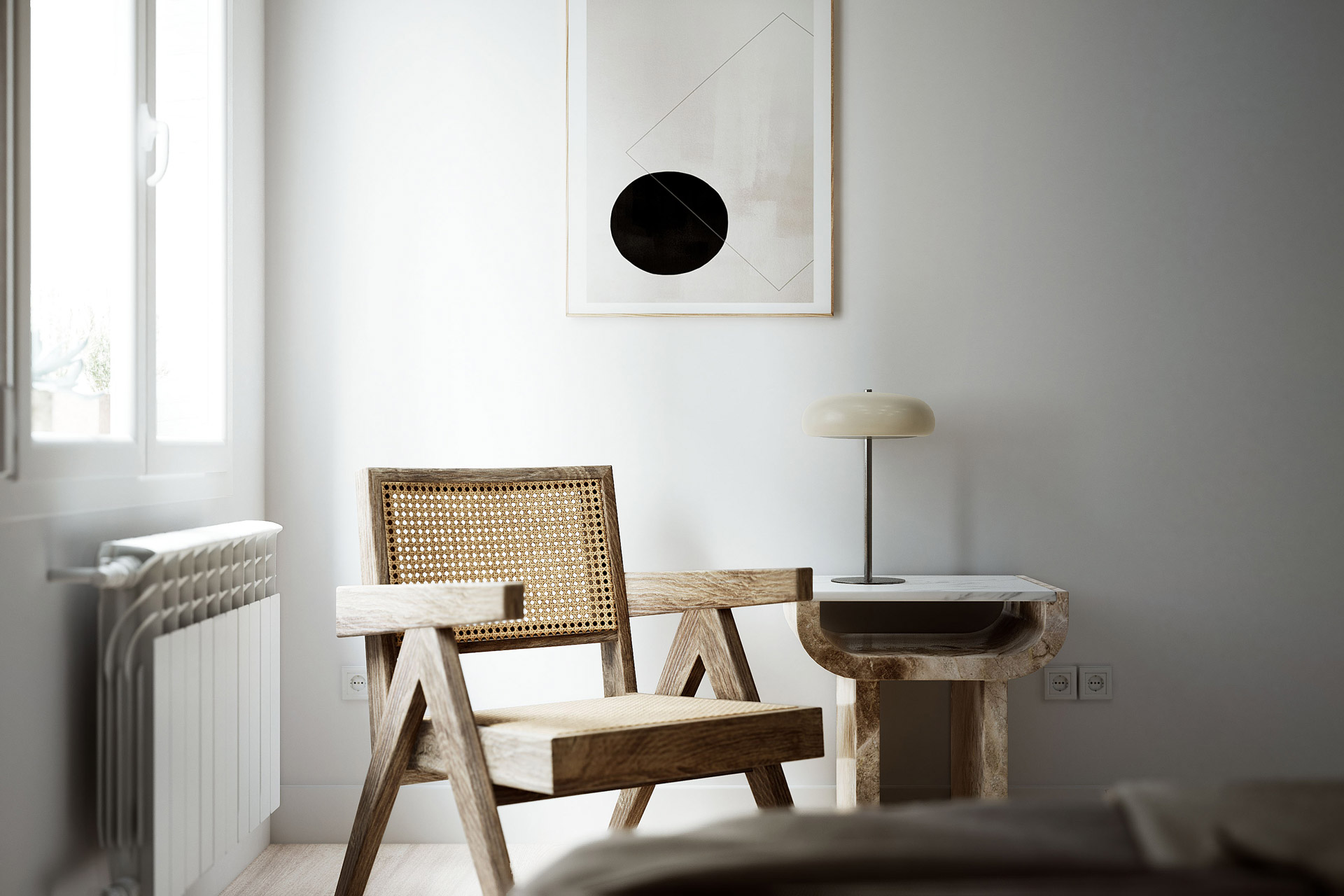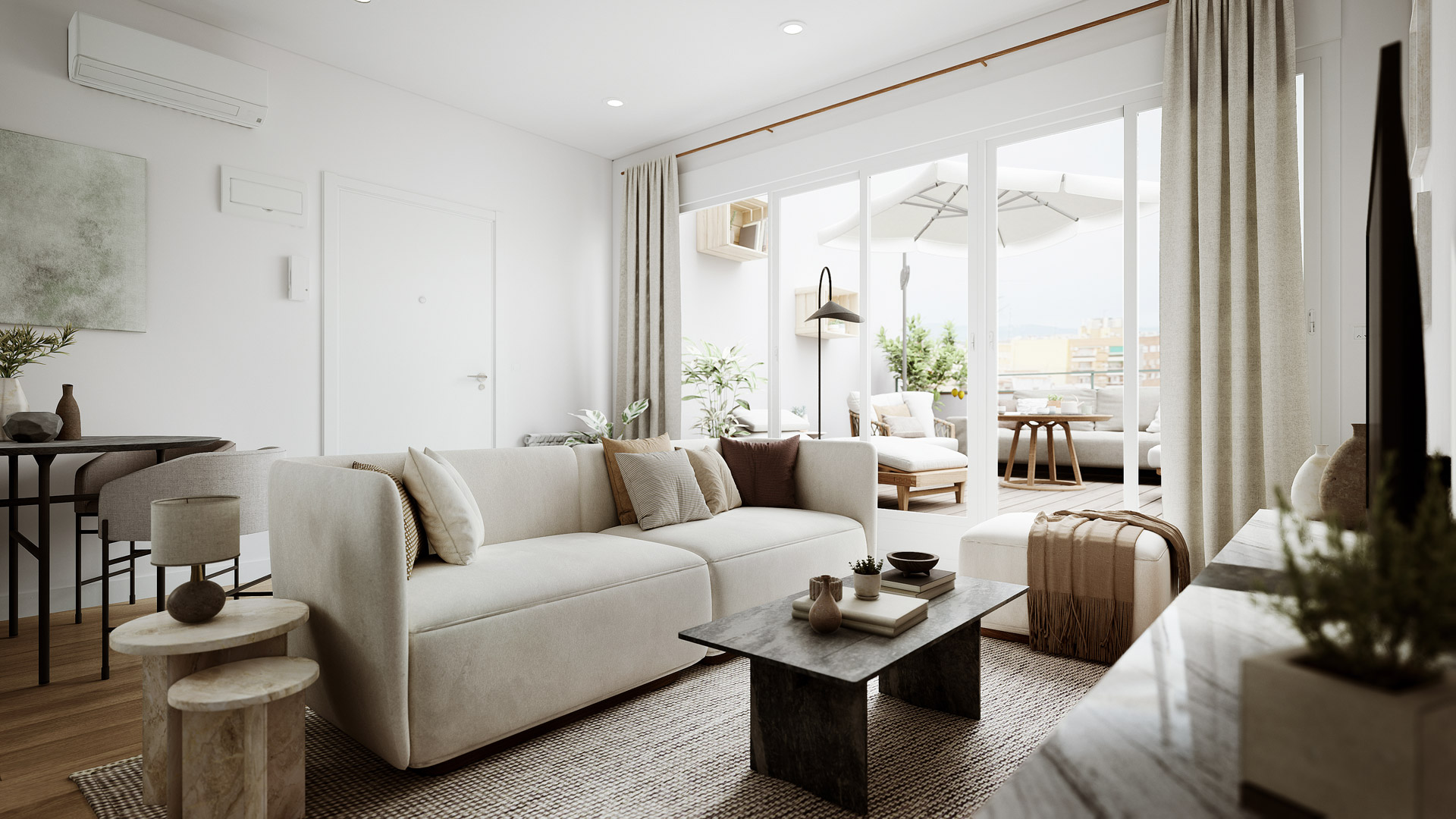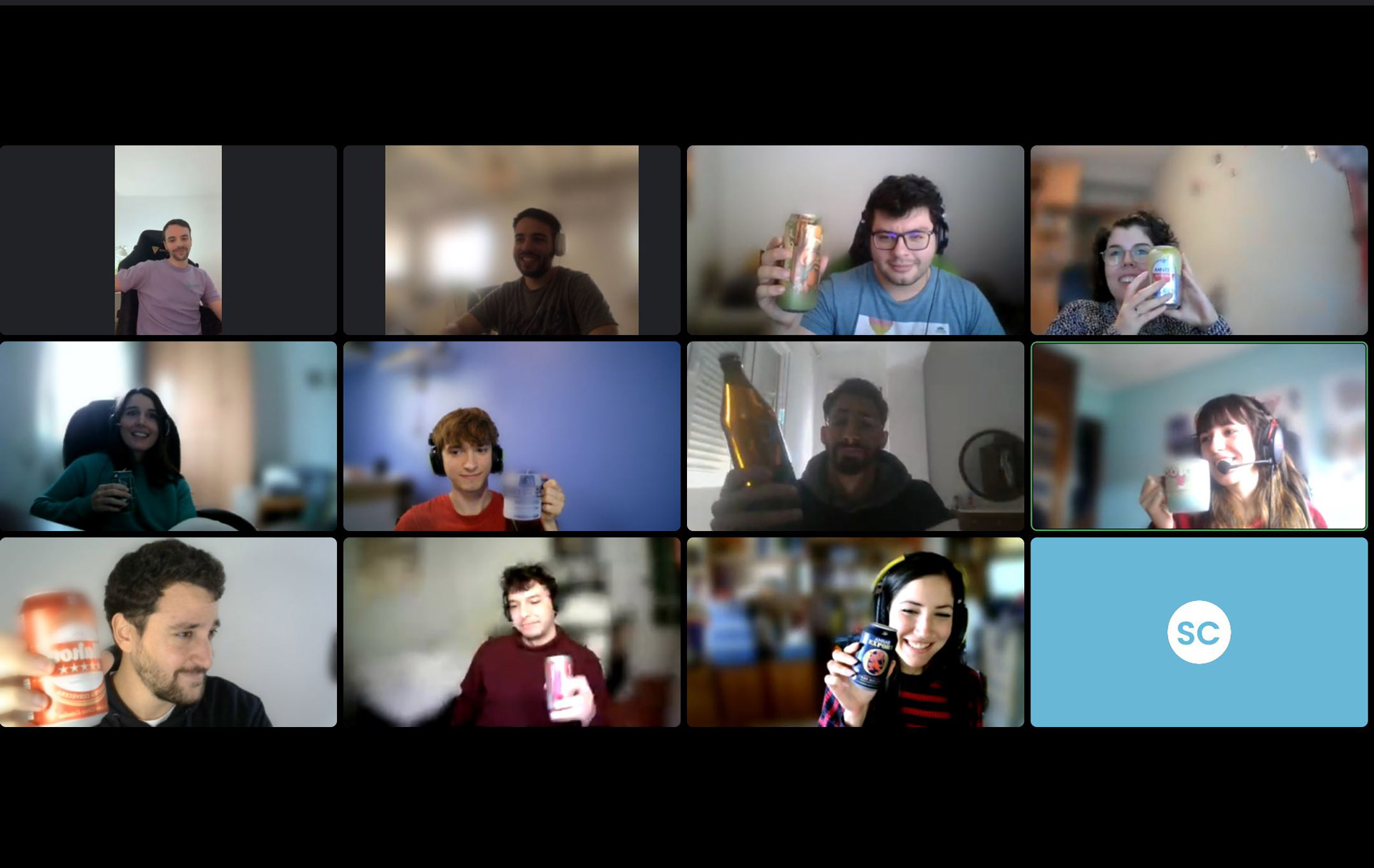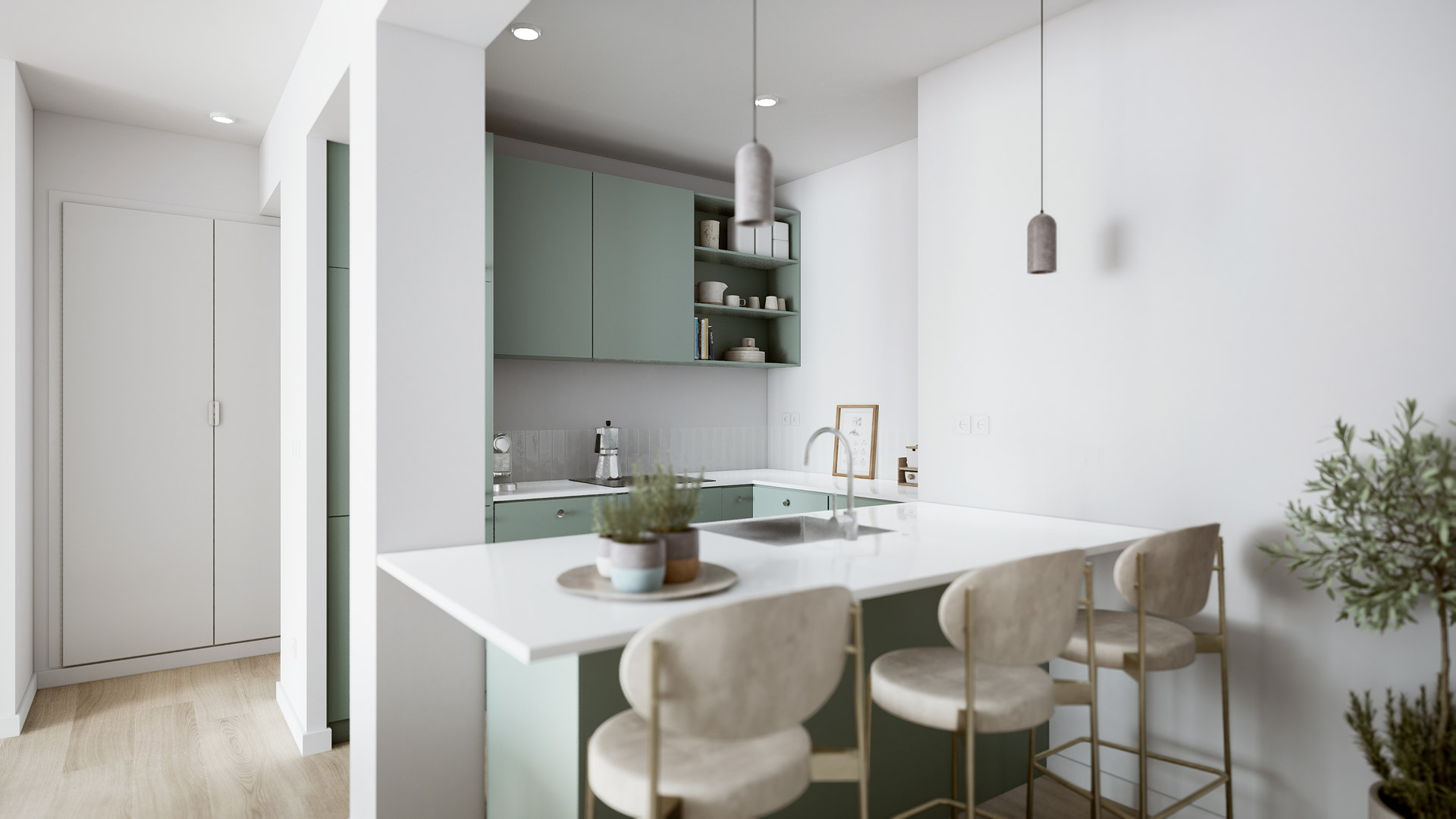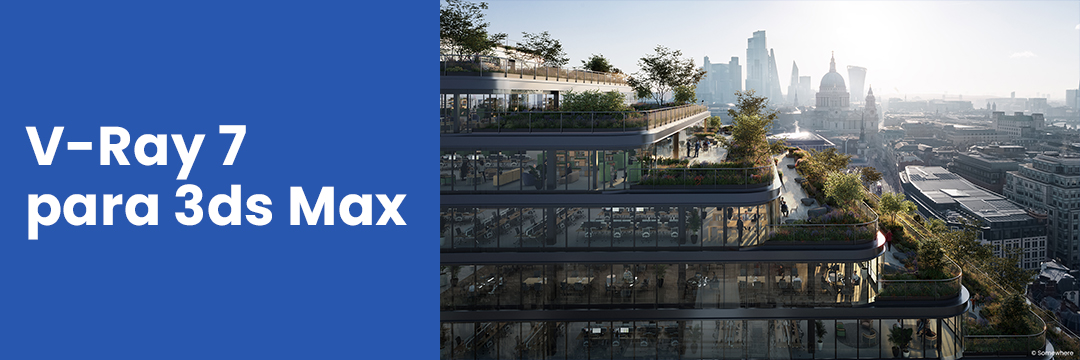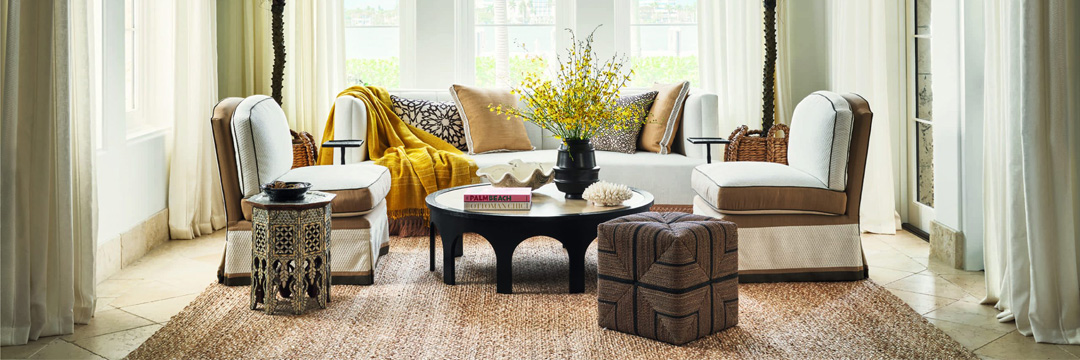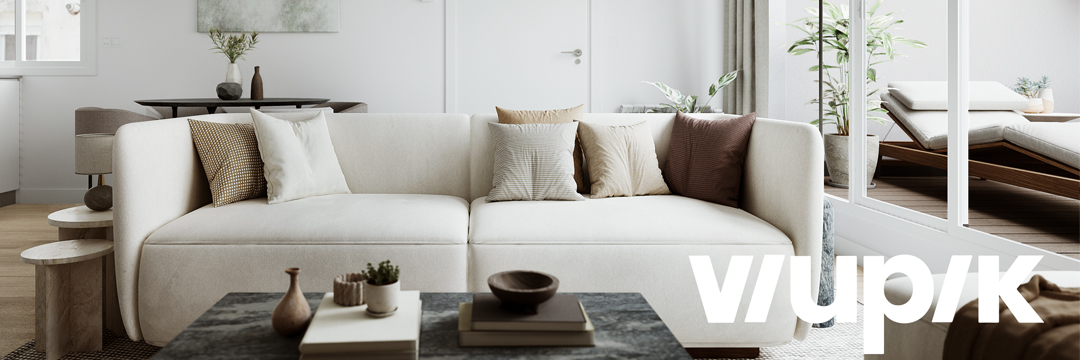
We are back with our section with an interview with Ramón Gea, founder of Viupik, a recently created Spanish startup that is trying to revolutionize the architectural visualization service by combining the standardization of processes and the latest technologies. Undoubtedly an innovative bet that seeks to streamline and provide more accessibility to this type of service.
1. Tell us about your professional profile and how you got to Archviz.
Hello 3D Collective, and thank you very much for this interview. For me it is a pride to be able to chat with those who have contributed so much to many 3D artists and who constantly help to give visibility to this industry.
Technically, I have a degree in higher architecture, but since the middle of my university studies I began to feel great interest in the world of cinema, specifically in traditional and 3D animation cinema. At the end of my degree I trained as a character and environment designer and, in addition, as a 3D generalist, after which I began to collaborate on animated shorts in different countries such as Spain, Russia and the United States. The last one, and from which I learned the most, was directed by Shad Bradbury, an animator from Pixar Animation Studios and in which more than 160 artists from all over the world participated. In this project I had the opportunity not only to learn from many professional branches and veteran artists, but I was able to see how they developed their own real-time rendering software that helped me understand the enormous potential that this technology had applied to the world of 3D.
At the end of 2018 I joined a startup in the real estate world where I was responsible for developing and applying technologies from the world of video games to 3D architectural visualization, something that was hardly being done in Spain at the time. This experience, which lasted more than three years with great success and leading the 3D and Innovation team, allowed me to grow and develop in the technical and business aspects of the business world and, in turn, the archviz industry.
After this stage, I decided to “jump into the pool” and leave everything to advance my work and take it much further in the direction that I thought was the right one, and thus be able to offer something totally innovative within the market.
2. Tell us about Viupik and what kind of service you offer
Viupik was born, precisely, in December 2021, with me being the only partner and hiring the first person in the team on the first day of work. What we do is respond to needs that, in our opinion, are not fully covered in the current market, and that is why we want to propose a new way of selling customer projects in 3D, that is our main obsession.
If you allow me the parenthesis for a personal opinion, I think that many times, 3D artists dwell too much on our priorities forgetting that, in the end, a render must serve to sell, and the way to do it changes radically between the type of project and the type of client. It is not the same to sell a competition architecture, where what matters is to represent an idea that prevails over the others, than to recreate all the rooms of a reform project where the final client is going to spend all the savings of his life to live. This makes new technologies key not only to determine if the project is going to sell better or worse, but it can be decisive for certain clients to even hire our services. That is why what we offer are standardized sales packages, that is, we can represent a project with practically no limits, delivering, in just 7 days, dozens of renders, videos, or virtual tours where you can interact and view housing data that speed up the sale of the product.
Renders are now just one part of all marketing content, because we believe that certain types of clients demand more than just static images. That is one of the reasons why we are (for now) focused on the real estate sector trying to give access to companies that previously could not afford 3D visualization services and that, in our opinion, require a significant financial investment.
3. How did you come to Lanzadera and what has it meant for the project?
We applied to Lanzadera in the same month of December in which I started the project and we had to go through 4 phases of interviews and presentations until, finally, we were part of the 50 chosen from among the 1000 candidates in January 2022. Lanzadera, for who does not know, is the startup incubator of Juan Roig, owner of Mercadona, located in Valencia.
Since we entered we have had access to the entrepreneurial and technological world, which has allowed us to immerse ourselves in the most cutting-edge innovation in the country and, of course, open horizons and ideas to understand our business. A good product does not guarantee the success of a company, that is why the way of executing it is the key and for this you have to open your mind and surround yourself with people who make you rethink everything you do.
4. What is your business model?
As I was saying before, we want our clients to sell through 3D without limits of creation and navigation, but with a 100% digital service and a lower financial investment. For this we have had to innovate in two branches: the product and the service, both equally.
On the one hand, there is the product, where we are able to apply rendering technology in real time and, in this way, the client can visit every corner of the house, interact and personalize its elements, visualize data of its products or render images and videos up to 15 times faster than the traditional way.
On the other hand, we innovate in the service, which we believe is not very digital for these times. In my opinion, I believe that in the middle of 2022 an effort must be made to budget projects and manage communication in a more agile and accurate way, that is why we want our clients to send us their project and completely ignore it. For this we offer standardized prices, short delivery times, a user portal where they can configure their projects and their products and, where in turn, they can monitor progress and data of all kinds in real time. This development has allowed us to provide the solidity necessary to serve large companies and a significant volume of monthly projects.
In short, we want to offer, for less price, the greatest scope to our clients’ projects while saving their commercial resources for what is most important.
5. What are the challenges you have faced in this type of entrepreneurship?
The truth, (and here I am going to try to be very clear), everything is being a very sacrificed challenge. Recreating a team from scratch and managing it, generating new workflows and automating many of the production processes, both on the 3D side and on the computer side, has been a very important technical challenge but it was foreseeable.
The most difficult thing, or at least for me, has been visualizing a new way of doing things, guiding customer service so that they understand something that they are not used to and, of course, the risk that one faces. We have been one of the few startups that has managed to grow so much without investment (despite the fact that many investors have offered it to us), going from 1 to 15 employees in less than a year, and that requires a personal sacrifice (not only mine but of all workers), for which we must try to be prepared.
In my case, as a single partner, I have believed that the only way to build something really innovative and solid in the long term is by making a significant prior investment (as all companies do), and that sometimes makes you dizzy and you have to face it with sacrifice. and positive mindset. As they say in the world of startups, entrepreneurs have to feel comfortable in the uncomfortable, otherwise it is very difficult to prosper with so much risk. If you see a clear purpose and trust in it, you already have a part done and it is very possible that, when the hard moments come (and, I assure you, they come constantly), you will overcome them. Fortunately, I have surrounded myself with fellow entrepreneurs in the same situation as myself and that helps a lot when doubts and insecurities lurk.
6. What is your workflow and tell us about your creative process.
In that sense, we are quite atypical, really. Our creative process tends to take place more precisely when we are not producing commissions and we have time to do R&D of all kinds. This is when our creativity unleashes and where we dedicate a lot of resources to improving, researching, developing new technologies or new ways of creating our scenes, both at the process and stylistic level.
What we intend with this is, precisely, that the quality of a job does not depend only on how inspired or successful a 3D artist from the team may be at that moment, but precisely that we guarantee our standards in any circumstance. For this reason we rely heavily on our research and development so that our processes are as standardized and agile as possible so that the worker can truly focus on the client’s project. This is, for us, what then determines the workflow that we have.
At Viupik, clients do not have to worry about what points of view they want or what corrections to make. They just configure their package and the style they want through the web and, once we receive the documentation, we start it up, offering constant monitoring from the customer portal.
7. Tell us about the application of Unreal Engine and new technologies within your commercial offer.
Unreal Engine is, for us, the most versatile real-time rendering engine of all. Yes, it is true that it requires deeper learning and experience, but now it is much easier than when I started in 2018. Currently there are more resources (such as the one that Schooling has within its training offer), more artists, more access and more possibility of application in the industry apart from video games.
Unreal for us is not only a flexible tool to offer immersive documentation but also something deeper that shows data, realities or products. At Viupik we are very interested in the concept of digital twins, and in the possibilities of managing big data information and visualizing it to give more impetus to the sale of our clients’ projects. That is why we are working on artificial intelligence tools for our processes, interactive functionalities that have not been seen before, investment modes, augmented reality or mixed reality. But technology is nothing if it is not at the service of the sale and the customer, and this is a difficult step when it comes to seeing if a product can materialize into an effective service.
8. What are your influences and references when undertaking this project?
Obviously, like any 3D artist, we closely follow any veteran company that has opened the doors to the world of archviz in Spain, or many lesser-known freelancers, interior designers, magazines, furniture brands, etc., who feed the stylistic part . As a movie lover, this gives us a new way to find better narratives for videos or immersive experiences and another way to tell the same concept.
However, in the case of our business, which is much more than just making pretty pictures, references from other industries or startups are more present in our day to day than anything else. In my case, I think I spend much more time drinking from technological references that apply to the world of engineering, SaaS (Software as a Service), business, video games, and AI than any 3D artist. This allows us to open our minds to optimize processes, devise new functionalities and improve the quality of the service to, precisely, add more value to our product and sink our teeth into what we believe the future will be.
9. Tell us about your company culture
As I mentioned above, we are obsessed with doing a lot of development. Every employee knows that when they’re not on a productive task, they have to make collective efforts to research new ways of doing things, improve existing ones, fix bugs, or come up with wacky ideas that might have a place if they’re shaped properly.
For example, every Wednesday we hold an R&D meeting where we bring concepts, references, sketches or tests that we discuss to find out if we’ll dedicate development time to it or if we’ll park it for another time. I am going to take the opportunity to appropriate and modify a phrase from John Lasseter, one of the founders of Pixar, which very well summarizes the technical spirit of Viupik: “service challenges technology and technology inspires service”. I believe that this reflection helps us a lot to be aware that first we have to think about the client to develop our technology, and when it is developed, new ideas will appear that add value, so a chain that constantly feeds back will grow.
Regarding the most human part, I still recognize that we have many things to improve given the limitations we have, but I think we are building a startup with good values. Soon we will have offices but, for the moment, we do everything in our power to have more contact with each other and relate as much as possible through our screens.
On Fridays, without going any further, we go out at 2:00 p.m. and, half an hour before, we meet by video call for the so-called “virtual beers”, which is a hole that we have where we are almost forbidden to talk about work and where we prepare to relax on the weekend. We try to understand each one’s circumstances as best as possible and that not only does the employer have to ask but also the employee has to give, especially when the employee works so hard in a high-growth company.
10. When hiring, what do you look for in an artist?
From a technical point of view, we need them to understand the basics of 3D well, and this is often forgotten. A 3D artist has to know how to model objects with a certain complexity, understand their UVs well, know how to give interest to a model with little richness of details, etc. It does not matter if resources are bought or downloaded later, the worker has to know all these bases.
Another widespread problem we see is that very few know how to texturize. Texturing is not dragging materials from software, but knowing how to create those maps yourself with control both to recreate an existing one and to invent one from scratch. Whoever entrusts all his skills to the software on duty, in the end will end up being a professional dependent on the resources that exist, and these can end up being available to anyone. The best way, for me, is to try to make an effort to understand those resources and to count on the fact that, if necessary, they could be generated by oneself.
Another crucial part is knowing about complementary professional branches such as photography, interior design (or graphic design), which allow developing the necessary skills on a day-to-day basis, but that is often seen in the details of each person’s hobbies. person, not so much in the profession that he has decided to study. Many times I see people who, although they have not had any kind of contact with the architectural world, have more taste than other people who have dedicated themselves to it professionally. The key, in my opinion, is knowing how to instil in the team a feeling of fondness for the arts and technology so that it can not only serve us in work practice, but also allow us to enjoy the work, oxygenating it with adjacent disciplines. For this reason, we do not look (with exceptions) for people who are highly specialized in something, because we believe that it is much more fun for a worker to learn from many professional branches that set new long-term goals, both personally and in the company.
From the point of view of personal skills, which for me are the most important in a startup, we highly value that, from the outset, you have an entrepreneurial spirit. Fortunately, I have had a life with many opportunities and I really appreciate seeing how someone has combined their studies with other jobs, from having their 3D assignments to working as a waiter. From my experience, those people are the ones who then give the most size, the opposite rarely happens. I prefer to hire a person with less technical knowledge in 3D but with a lot of attitude a thousand times before, than someone who has a lot of experience or visual quality but has taken a long time to reach that level or even hesitates when problems come.
11. How do you see the future of Viupik and the Architectural Visualization industry?
A few years await Viupik to continue consolidating and offering everything that we are developing and working on during 2023, which is going to attract a lot of attention, we have no doubt. I am sure that, with a lot of effort, we will be able to keep up with this pace and innovate in the way we currently do 3D, integrating various technologies and services.
As for the future of the architectural visualization industry, I’m pretty sure it’s going to take a major turn in the next 5 years, and in some ways quite radical. I myself have experienced the development of real-time rendering in the last 5 years and tools are being offered that did not exist commercially before, and some of them are already developed enough to explore them, even if it costs more.
In my opinion, rendering is no longer enough; I think that the 3D artist has the “obligation” to immerse himself in other branches such as programming, computing, data or any other technology if he really wants to build something innovative in the future. Of course, things will continue to be done as before, but the new generations cannot replicate what veterans already know how to do very well (and from whom many of us have learned), but we have to deal with what we believe is beginning to be requested the market and adding more value to what already exists.
I hope you have enjoyed this interview, if you are interested in learning more about Viupik’s work, you can visit the following links:
As always, we invite you to leave any comments or suggestions at the bottom of this page.


